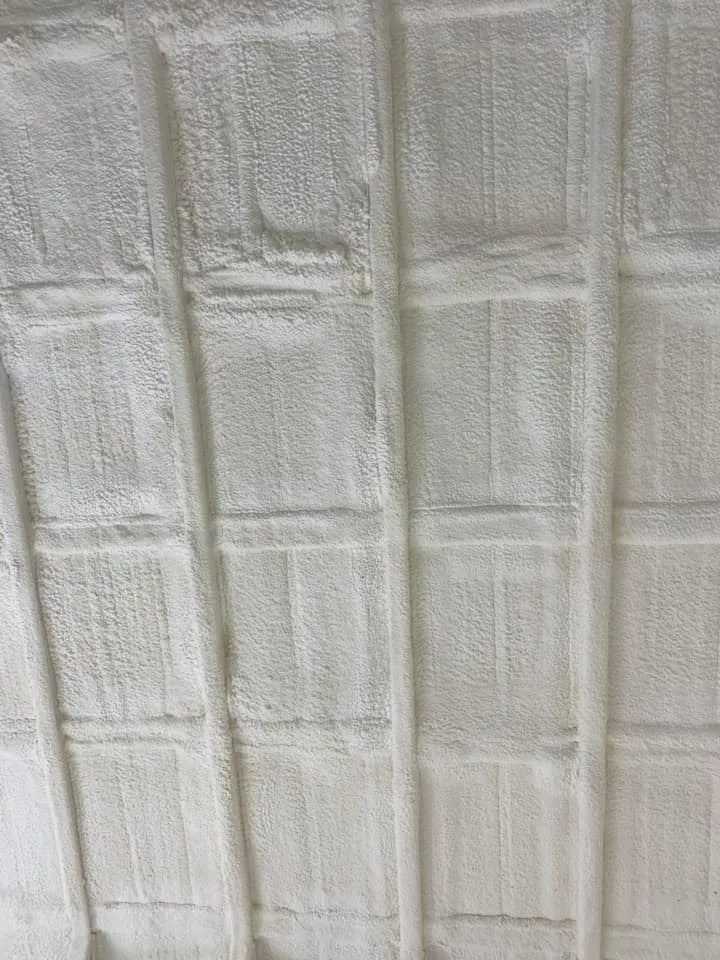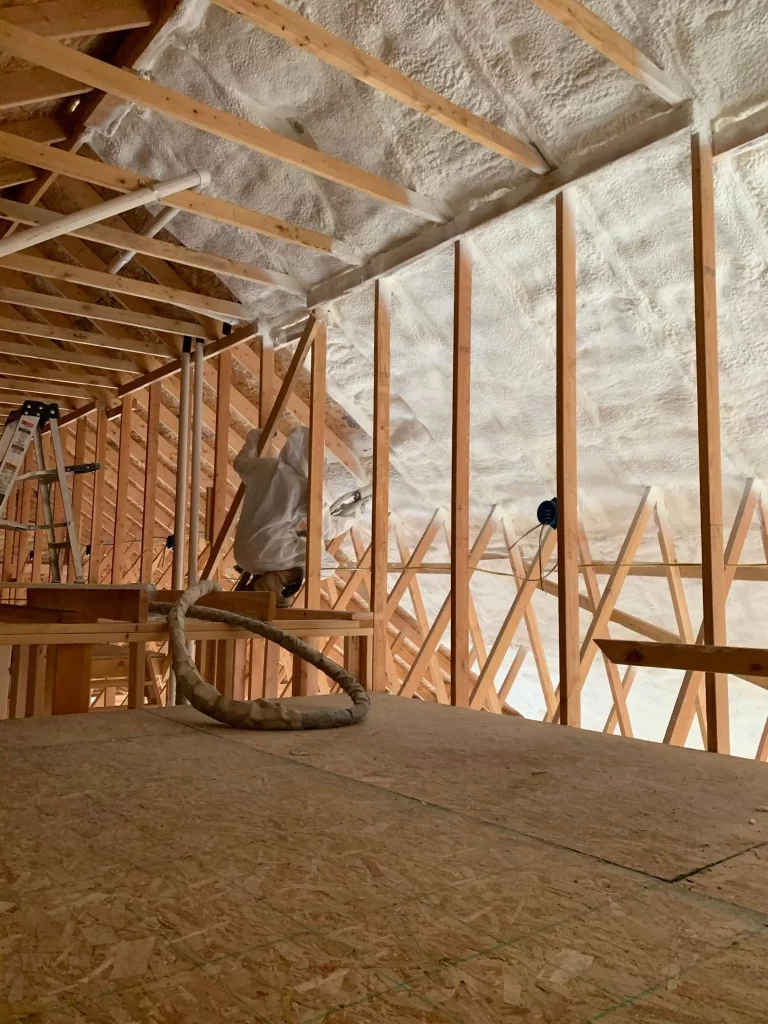
The performance of open-cell spray foam insulation depends entirely on the quality of its installation. A professional application is necessary because the material is manufactured on-site in a complex chemical reaction sensitive to temperature, pressure, and mix ratio. Errors in any of these variables can lead to a host of problems, including poor adhesion, reduced thermal resistance, and persistent chemical odors. While DIY kits may seem like a cost-saving measure, the technical precision required for a safe and effective outcome makes a certified installer indispensable.
This article breaks down the technical reasons why professional installation is not just a recommendation but a requirement for achieving the full benefits of open-cell foam. With years of hands-on experience insulating structures of all types, High Country Solutions understands the exact science behind a successful application. The information here comes from direct field knowledge and industry best practices.
Open-cell spray polyurethane foam (SPF) is created when two liquid components, an isocyanate (A-side) and a polyol resin (B-side), are mixed under specific conditions. This is not just a simple mixing process; it’s a chemical reaction that must happen correctly within seconds.
The A-side and B-side components must be mixed at a precise 1:1 ratio by volume. If the mixture is “off-ratio,” the foam will not cure properly. This can result in a foam that is either too crunchy or too soft, has a lingering odor, and fails to deliver the expected R-value. According to the Spray Polyurethane Foam Alliance (SPFA), maintaining this ratio requires sophisticated equipment capable of monitoring pressure and temperature continuously.
Temperature is just as important. Both the chemicals in their storage drums and the surface they are being applied to must be within a specific temperature window, typically between 60°F and 80°F. Applying foam to a cold surface can cause it to cure improperly and pull away from the substrate.
Bonus Tip: Before application, a professional will use a moisture meter to check the wood framing. Applying spray foam to a damp surface can trap moisture, leading to rot and compromising the foam’s bond.
The equipment used by professionals is fundamentally different from what’s available in disposable DIY kits. Professionals use high-pressure, plural-component proportioners that heat and pressurize the two chemicals separately, delivering them through heated hoses to a spray gun. This machinery ensures the materials are perfectly mixed at the exact moment of application.
The application technique itself is a craft. Open-cell foam expands rapidly, up to 150 times its liquid volume. It must be applied in thin layers, or “lifts,” usually no more than two inches thick at a time. This controlled approach allows the heat generated by the exothermic chemical reaction to dissipate. Applying it too thickly can trap excessive heat, which can scorch the foam, create a fire hazard, and damage its cellular structure.
| Feature | Professional Grade Equipment | DIY Kits |
|---|---|---|
| Pressure | 1,000 – 1,500 psi | 150 – 250 psi |
| Heating System | Integrated heaters for chemicals and hoses | Unheated tanks (ambient temperature dependent) |
| Ratio Control | Automated and continuously monitored | Pre-pressurized and less precise |
| Output Volume | High volume for consistent coverage | Low volume, suitable for small sealing jobs only |
| Typical Use | Whole-home insulation (walls, attics, crawlspaces) | Air sealing small cracks and gaps |

When the application process goes wrong, the consequences can be serious and costly. Homeowners who attempt a DIY installation or hire an untrained contractor often face a set of predictable problems.
Before choosing to install open-cell foam, it’s important to evaluate several factors that will influence the project’s success.
Consider the scale of your project. Sealing a few small gaps around windows is very different from insulating an entire attic or wall system. For larger projects, a professional is the only viable option. Professional installers are also knowledgeable about local building codes. For instance, guidance from the International Code Council (ICC) specifies that most SPF applications in living spaces require an ignition or thermal barrier, like drywall, to be installed over them for fire safety.
The upfront cost of professional installation is higher than a DIY kit, but it secures the long-term value of the insulation. A correctly installed foam system provides consistent energy savings, improved indoor air quality, and adds structural rigidity to the building. These benefits are lost with a failed application, which turns a potential asset into a significant liability.
Bonus Tip: Ask any potential installer for proof of certification from the manufacturer or an organization like the SPFA. This confirms they have been trained on the specific product and equipment they will be using.
Ultimately, the performance of open-cell spray foam hinges on the installer’s skill and equipment. As demonstrated, precise control over chemical ratios, temperatures, and application techniques is not just a best practice—it is a requirement for success. Investing in a certified installer ensures these critical variables are managed correctly, safeguarding your building’s long-term energy efficiency, structural integrity, and indoor air quality. To ensure your project meets these exacting standards, it’s wise to partner with a qualified and experienced contractor.
Understanding the technical side of open-cell foam is the first step toward making an informed decision for your property. If you have questions about whether this insulation is right for your specific needs, it’s best to consult with experienced professionals. For a detailed assessment or to discuss your project, you can contact High Country Solutions by phone at (307) 248-9063 or by email at [email protected].
While open-cell foam is typically tack-free within seconds and trimmable within minutes, it takes about 24 hours to fully cure and for any residual vapors to dissipate. Professionals use ventilation fans to ensure the site is safe for re-entry by other trades or occupants.
Installers use a specialized long-bladed saw or knife to trim the foam flush with the studs. This process does not damage the foam or affect its performance; it simply removes the excess material to allow for the installation of drywall. To ensure a complete seal with no gaps, cavities are intentionally overfilled. While this creates some waste, this method is the only way to guarantee the cavity is 100% filled. The trimmed material is inert and can be disposed of as normal construction debris.
No. For spray foam to work as an effective air and thermal barrier, it must be applied directly to the sheathing and framing. All existing insulation, like fiberglass batts or cellulose, must be completely removed from the cavities before application.
Homeowners should remove all personal belongings, furniture, and valuables from the work area. Professionals will cover windows, doors, and floors with plastic sheeting to protect them from overspray. It’s also necessary to ensure clear access to all areas being insulated.
Professionals wear full-face respirators, chemically resistant suits, and gloves to prevent exposure. The work area must be well-ventilated, and access should be restricted to trained personnel during and immediately after application.
Open-cell foam is an inert polymer and does not provide a food source for mold. Because it’s a breathable (vapor permeable) material, it allows any trapped moisture to dry out, which helps prevent the conditions necessary for mold to grow in the first place.